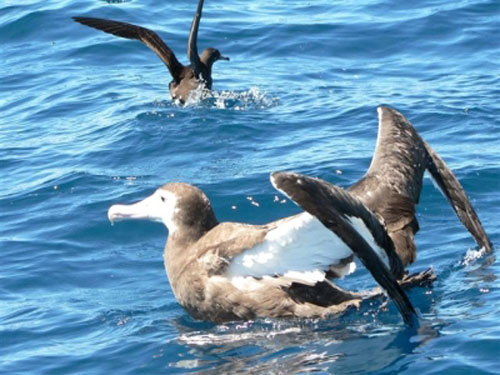The paper's abstract follows:
"Satellite transmitters and other tracking devices are valuable tools for furthering our understanding of bird movements, and their use has been steadily increasing. Since the necessary handling of birds to deploy transmitters can have deleterious consequences and the transmitter itself can add substantial mass, particularly to small species, or bring discomfort to the individual birds to which they are attached, it is important to quantify the effect such devices on both the behavior and the fitness of equipped animals. Very few studies have focused on the demographic effects of equipping birds with a satellite transmitter, with the vast majority of such studies focusing on short-term behavioral effects. We have assessed the demographic effects of attaching a satellite transmitter to the back of adult breeding Wandering Albatross individuals using long-term demographic data (20 years) and recent developments in capture-recapture methodology. We found no evidence of any negative effects of the attached devices on the probability of survival, breeding, or breeding successfully in the current or following season in either males or females. We conclude that the current satellite transmitters and smaller devices used by researchers are valuable conservation and research tools that do not adversely affect the demographic traits of large albatrosses. Similar tests should be carried out on smaller species, which are more likely to be affected."

Juvenile Wandering Albatross at sea
Reference:
Barbraud, C. & Weimerskirch, H. 2011. Assessing the effect of satellite transmitters on the demography of the Wandering Albatross Diomedea exulans. Journal of Ornithology DOI: 10.1007/s10336-011-0752-8.
John Cooper, ACAP Information Officer, 30 September 2011

 English
English  Français
Français  Español
Español